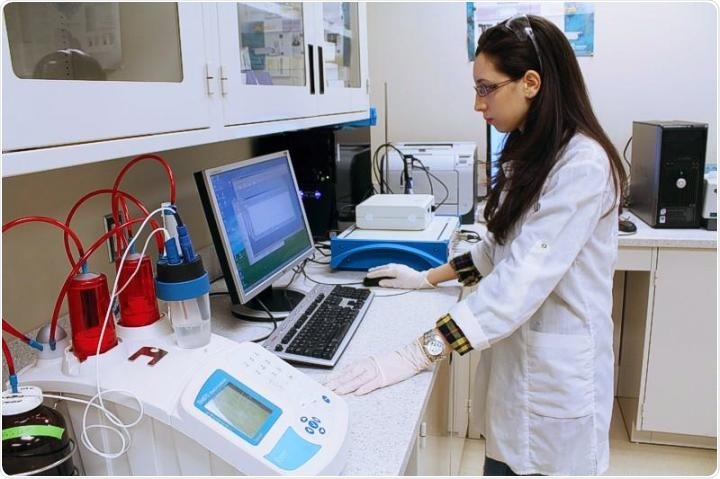Researchers from the Institut National de la Recherche Scientifique (INRS) have devised a technique for electrolytic wastewater treatment that destroys microplastics at the source. The findings of this study have been published in the journal Environmental Pollution.

Electro-analytical system used to identify appropriate electrodes for anodic oxidation processes. Image Credit: INRS.
Wastewater can transport large amounts of microplastics to the ecosystem. These tiny particles measuring less than 5 mm can come from clothing, mostly as microfibers. Professor Patrick Drogui, who headed the study, notes that at present, there are no defined degradation mechanisms for handling this pollutant during the treatment of wastewater.
Although certain methods exist already, they usually require physical isolation as a means of eliminating contaminants. These systems do not degrade them, and therefore, extra work is required to handle the isolated particles.
The researchers thus chose to degrade the particles through electrolytic oxidation—a mechanism that does not require the use of chemicals.
Using electrodes, we generate hydroxyl radicals (*OH) to attack microplastics. This process is environmentally friendly because it breaks them down into CO2 and water molecules, which are non-toxic to the ecosystem.”
Patrick Drogui, Professor and Scientific Director, Laboratory of Environmental Electrotechnologies and Oxidative Processes, INRS
This method involves using electrodes that are very costly than iron or steel electrodes, which eventually degrades but can be reused for a number of years.
An effective treatment
Professor Drogui proposes the use of this system at the exit of industrial laundries, a possible source of microplastics emissions into the environment.
When this commercial laundry water arrives at the wastewater treatment plant, it is mixed with large quantities of water, the pollutants are diluted and therefore more difficult to degrade. Conversely, by acting at the source, i.e., at the laundry, the concentration of microplastics is higher (per litre of water), thus more accessible for electrolytic degradation.”
Patrick Drogui, Professor and Scientific Director, Laboratory of Environmental Electrotechnologies and Oxidative Processes, INRS
Laboratory experiments performed on water deliberately polluted with polystyrene demonstrated a degradation efficiency of 89%. The researchers are planning to perform tests on real water.
Real water contains other materials that can affect the degradation process, such as carbonates and phosphates, which can trap radicals and reduce the performance of the oxidation process.”
Patrick Drogui, Professor and Scientific Director, Laboratory of Environmental Electrotechnologies and Oxidative Processes, INRS
If the system is found to be useful in real commercial laundry water, the researchers plan to perform an analysis to assess the cost of treatment and adaptation of the system for the treatment of greater volumes of wastewater. In some years, the technology could be used in laundry facilities.
Source:
Journal reference:
Kiendrebeogo, M., et al. (2021) Treatment of microplastics in water by anodic oxidation: A case study for polystyrene. Environmental Pollution. doi.org/10.1016/j.envpol.2020.116168.